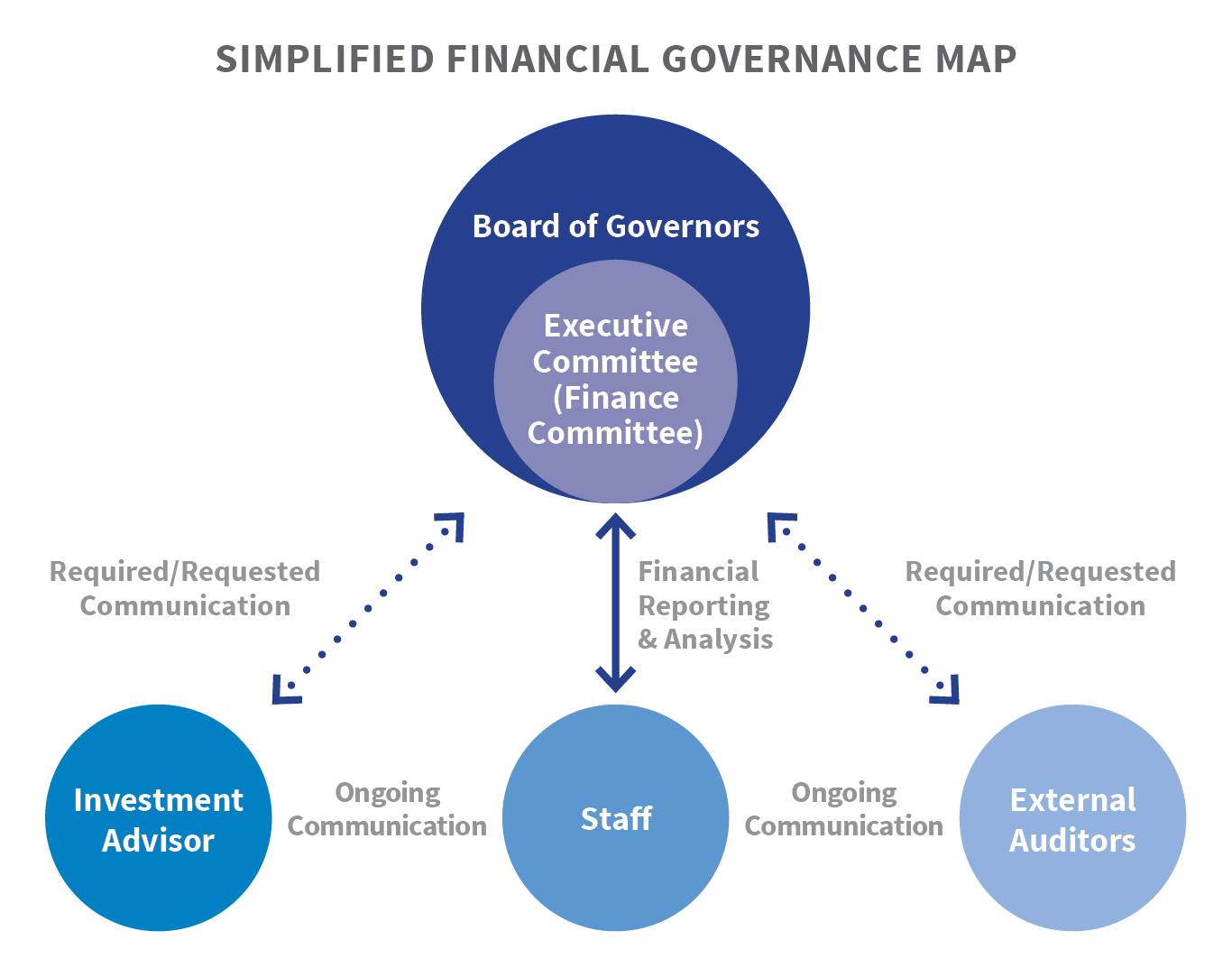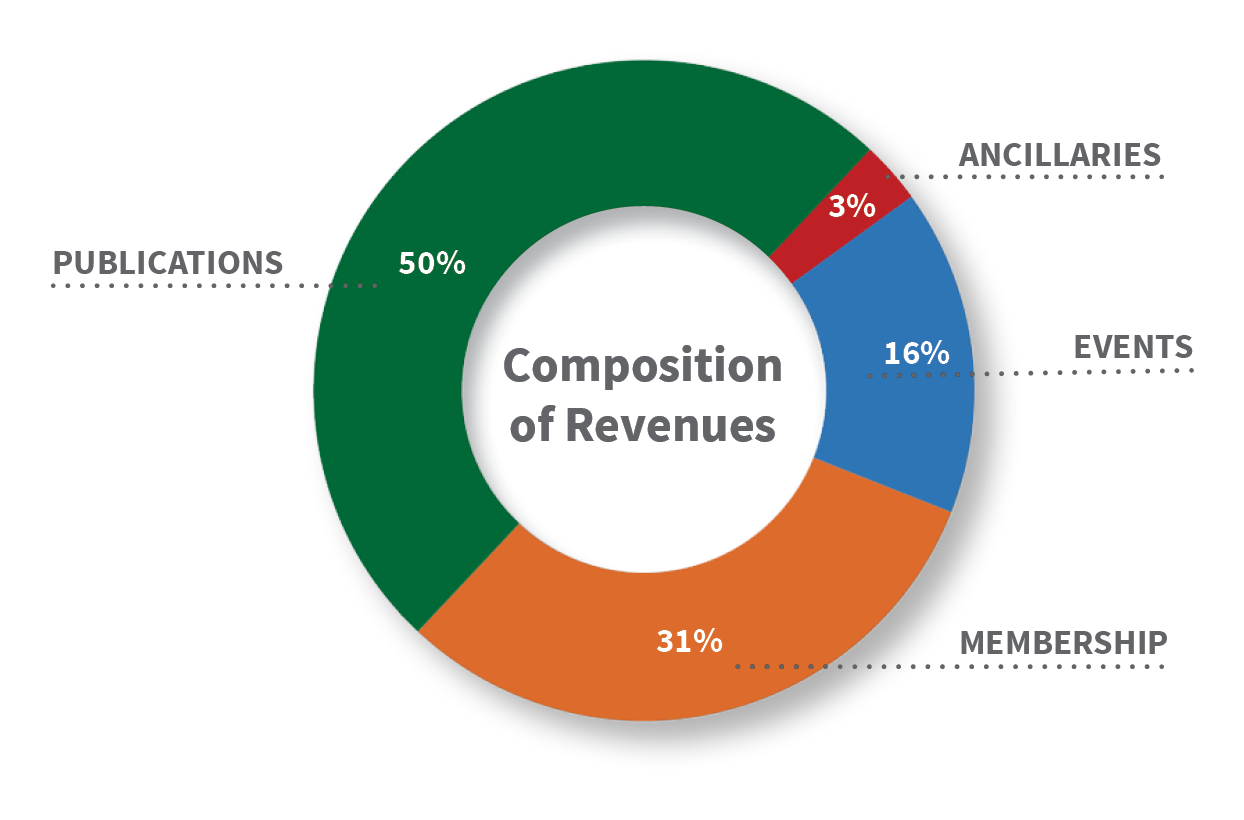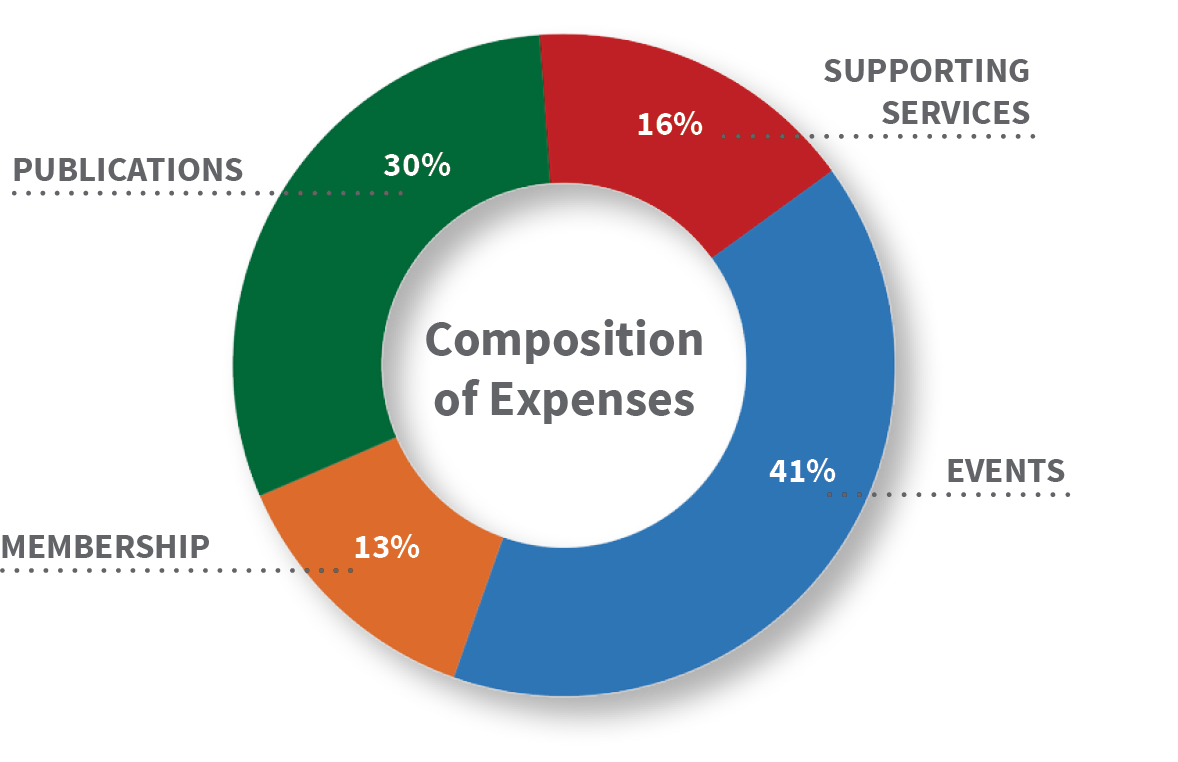2021 Finances
Finances

Operating Revenue
In 2021 , the Academy’s operating revenue was close to $10.5 million, with events, membership, and publications contributing approximately 16%, 31%, and 50%, respectively. The remaining 3% of revenue (Ancillaries) is generated through sponsorships received by Divisions and Interest Groups and other services. Membership dues are based upon the number of paid members within the Academy during the fiscal year. Event revenue includes registration fees, as well as sponsorships, exhibit sales, and career services. In 2021, the Academy’s event revenue continued to be impacted due to COVID, resulting in a lower than usual contribution to total revenue. Publishing revenue is based upon library subscriptions, licensing arrangements, permissions, and advertising. In sum, 69% of all revenue comes from non-dues sources.

Operating Expenses
In 2021 , the Academy’s operating expenses were close to $10.7 million, with programs and services (membership, publications, events) and costs for supporting services contributing approximately 67% (membership 13%, events 40%, publications 30%) and 33%, respectively. Operating expenses are annually impacted by conference venues and ancillary costs, publishing production and delivery, and any changes in general operating overhead. Programs and services expenses are related to the direct and indirect costs necessary to support events, as well as ongoing member and Division services, including academic program submissions support, information technology systems and platforms, direct venue expenses, member communications, and governance. Supporting services typically include staff, employee benefits, rental space, and other indirect costs, such as required external advisory services and insurance.

Investments and Reserves
Our investment portfolio is governed by an Investment Policy Statement, adopted by the Board of Governors in 2016 and reviewed annually. This policy specifies the Academy’s investment risk profile, asset allocation parameters, and appropriate market benchmarks to measure and assess performance. The purpose of investments is to fund AOM’s strategic initiatives and to provide financial stability in a changing organizational landscape that affects the non-dues revenue sources upon which we rely. Use of investments is determined by the Board of Governors. Overall, our investment mix is moderate when compared to like organizations and includes, but is not limited to, holdings in equity and fixed income, and select alternative investments. Investment portfolio return fluctuates with prevailing global macroeconomic and market trends.
Members please sign in to view the 2021 audited financial documents.